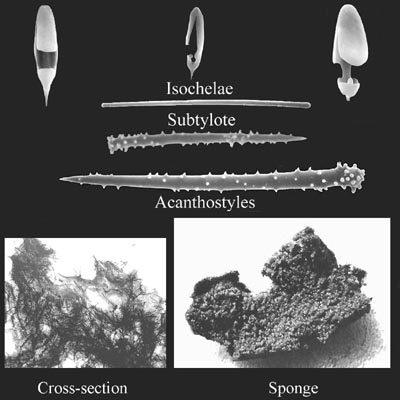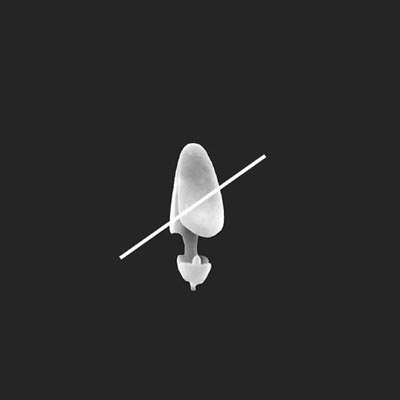[A]
Microscleres Anisochelae ONLY. |

| | Iophon rayae
(Bakus, 1966) |
Sponge:
Thin, encrusting, amorphous.
Consistency: soft, easily compressible.
Surface: smooth and mucoid.
Oscula: abundant, 67-500 μm in diameter.
Color: Alive: Cinnamon, cinnamon-brown, orange.
Spicules: Megascleres:
(1) Acanthostyles:
84 -124-165- 192 um.
x 6 -10-11- 14 um.
(2) Acanthostyles:
149 -174-209- 265 um.
x 6 - 10-11- 14 um.
(3) Subtylote-Strongyle-Tylostrongyle:
109 -141-158- 186 um.
x 3 -4 - 5 um.
(4) Subtylostyle:
174 -189 - 206 um.
(may be absent).
Microscleres:
(1) Palmate Anisochelae:
5 -15-18- 24 um.
Skeleton:
Ectosome: Dermal membrane with bundles of diacts in horizontal clusters plus Anisochelae.
Choanosome: Acanthostyles with heads embedded in basal spongin. Echinating tracts arise from here to surface. Surrounding tissue with loose megascleres and Anisochelae.
Distribution: Central to Northern California.
Depth: Intertidal to deep water, 79 meters.
Note: Northwest Pacific specimens tend to have higher means and upper ranges for all spicules. Was Hymdesanisochela rayae.
|
|
|
Microscleres OTHER THAN Anisochelae ONLY.
|

|
|